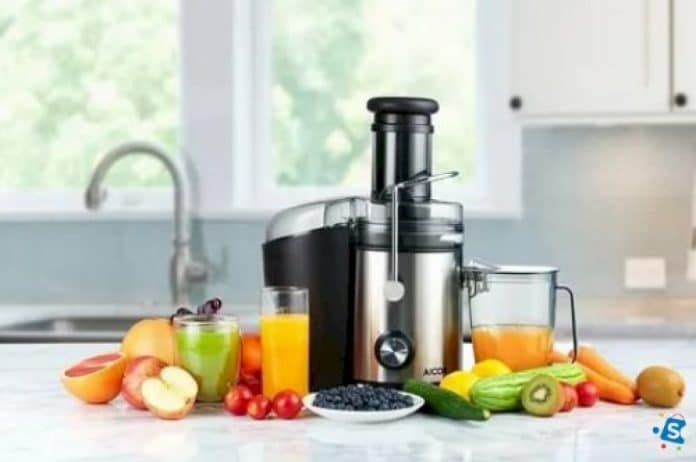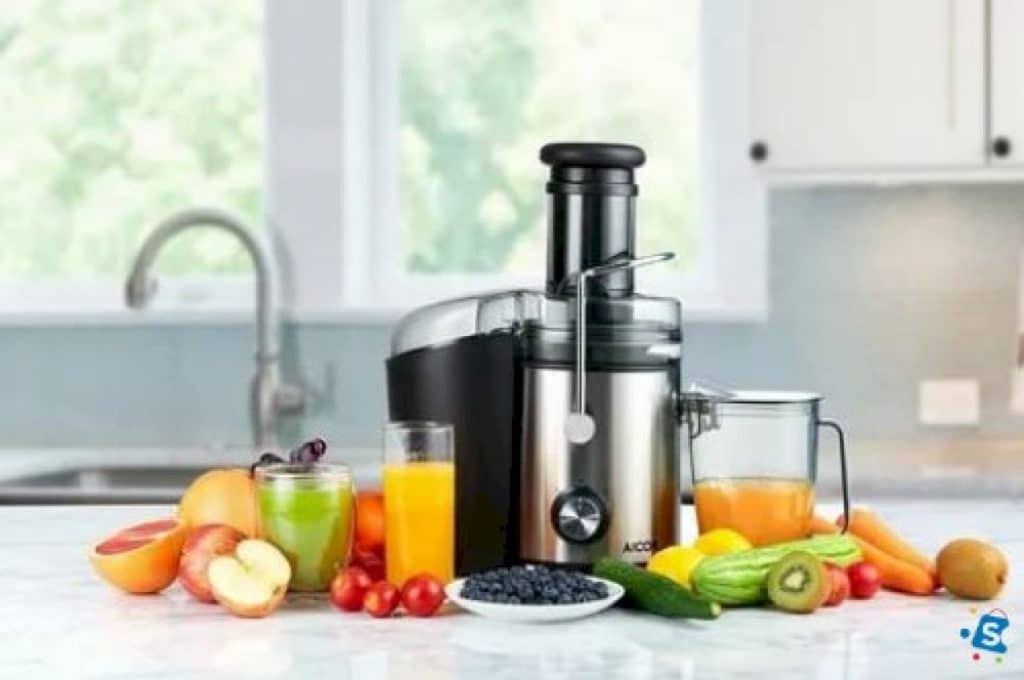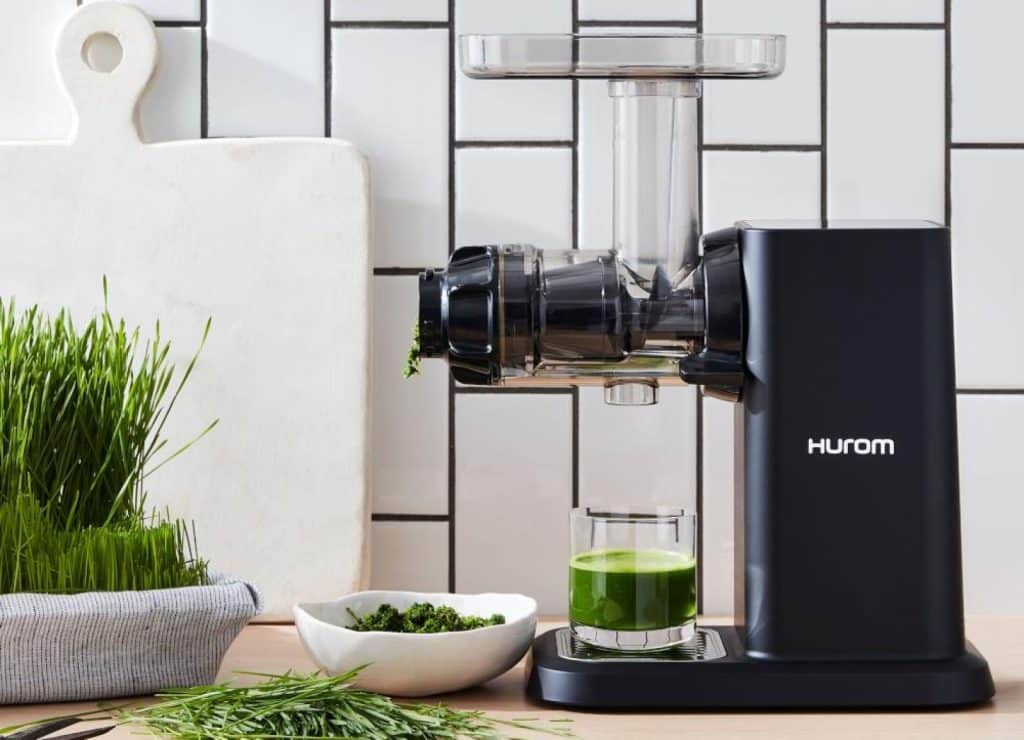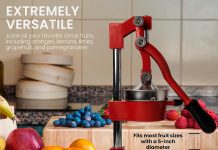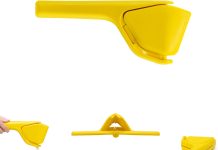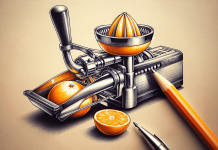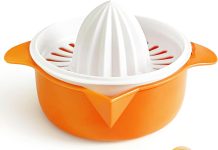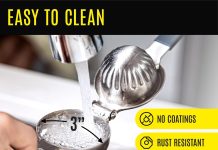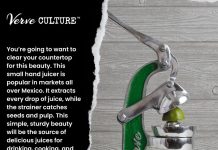Juicing has become an increasingly popular way to incorporate more fruits and vegetables into our diets, but it’s important to remember that using a juicer comes with certain risks. To ensure a safe juicing experience, we need to be aware of a few key safety tips. From proper handling and cleaning techniques to understanding the potential risks of certain ingredients, this article will guide you through the necessary precautions to take when using a juicer. So, let’s jump right in and explore these important safety tips!
This image is property of juicernet.com.
Review contents
Choosing a Safe Juicer
When it comes to selecting a juicer, safety should be one of the top priorities. With so many options available in the market, it’s essential to choose a juicer that comes with safety features. These features can significantly reduce the risk of accidents and ensure that you can enjoy your juicing experience without any worries.
Some essential safety features to consider when choosing a juicer include:
-
Locking Mechanism: Look for a juicer that comes with a secure locking mechanism. This helps to prevent any accidental spillage or leakage during operation.
-
Non-Slip Feet: Opt for a juicer that has non-slip feet. These rubberized feet offer stability and ensure that the juicer stays firmly in place during use, preventing any unwanted movement.
-
safety Sensors: Certain juicers are equipped with safety sensors that automatically shut off the machine if excessive heat or pressure is detected. This feature not only protects the juicer from damage but also reduces the risk of accidents.
-
BPA-Free Materials: It’s important to choose a juicer that is made from BPA-free materials. Bisphenol A (BPA) is a harmful chemical commonly found in plastics, and using a juicer made from BPA-free materials ensures that no harmful substances leach into your juice.
Preparing the Juicer
Proper preparation of your juicer is crucial to ensure its safe operation and longevity. Before using your juicer, be sure to follow these steps:
Read the Instruction Manual
The instruction manual provides valuable information on how to assemble, use, and maintain your specific juicer model. Take the time to read and understand the manual thoroughly. It will help you get familiar with the juicer’s features and functions, enabling you to operate it safely and efficiently.
Inspecting the Juicer for Any Damages
Before assembling the juicer, inspect all the parts for any damages. Check for cracks, chips, or any other signs of wear and tear. If you notice any issues, do not use the juicer and contact the manufacturer for assistance. Using a damaged juicer can lead to malfunctions or accidents.
Properly Assembling the Juicer
Follow the instructions provided in the manual to assemble the juicer correctly. Be sure to align the different parts correctly and securely lock them in place. Improper assembly can result in the juicer not functioning correctly or even cause accidents during operation.
Operating the Juicer Safely
Once you have prepared your juicer, it’s essential to follow these safety measures during operation:
Clean Hands and Workspace
Before using the juicer, make sure your hands and the workspace are clean. Wash your hands thoroughly to remove any dirt or contaminants that can transfer to the juicer or your ingredients. Ensure that the juicing area is clean and free from any clutter or potential hazards.
Using the Juicer on a Stable Surface
Place the juicer on a stable surface while operating it. This prevents the juicer from wobbling or tipping over during use, reducing the risk of accidents. Avoid using the juicer near the edge of a countertop or any unstable surface.
Avoiding Overloading the Juicer
Each juicer has a specific capacity limit. Be mindful not to overload the juicer with too many ingredients at once. Overloading can strain the motor and other components, potentially leading to malfunctions or even damaging the juicer.
Avoiding Excessive Force
Gently push the ingredients into the juicer, applying moderate pressure. Avoid using excessive force as it can strain the juicer and cause damage. Let the juicer do its job by allowing it to extract the juice naturally without forcing the ingredients through.
Not Leaving the Juicer Unattended
It is important never to leave the juicer unattended while it is in operation. Be present and attentive to ensure that everything is functioning correctly and to prevent any accidents that may occur due to malfunctions or other unforeseen events.
Keeping Children and Pets Away from the Juicer
Juicers contain moving parts and sharp blades that can pose a significant risk to children and pets. To ensure their safety, keep them away from the juicer while in use. Store the juicer in a secure place where they cannot access it when not in use.
Safety Measures during Cleaning
Cleaning your juicer is an essential aspect of maintaining its performance and safety. Follow these safety measures during the cleaning process:
Disconnecting from Power Source
Before cleaning the juicer, always disconnect it from the power source to avoid any potential electric shock or accidents.
Allowing Juicer Parts to Cool Down
After juicing, give the juicer parts some time to cool down before cleaning them. Hot parts can cause burns, so it’s best to wait until they have reached a safe temperature before handling them.
Using Safe Cleaning Materials
Use safe cleaning materials, such as non-abrasive sponges, brushes, and mild detergents, to clean the juicer. Avoid using harsh chemicals or abrasive cleaning tools that can damage the juicer’s components.
Avoiding Sharp Objects
When cleaning the juicer parts, be cautious around sharp blades and other components. It’s best to use the cleaning tools provided by the manufacturer or silicone brushes to avoid any accidental cuts or injuries.
Drying the Juicer Parts Thoroughly
After cleaning, ensure that all the juicer parts are thoroughly dry before reassembling or storing them. Moisture can promote the growth of bacteria and mold, compromising the safety and quality of your next juicing session.
This image is property of s3.eu-west-2.amazonaws.com.
Preventing Electric Shock
Electric shock is a serious hazard that can occur if proper precautions are not taken when using a juicer. Here are some measures to prevent electric shock:
Properly Grounding the Juicer
Ensure that the juicer is properly grounded according to the manufacturer’s instructions. Grounding helps protect against electrical shock by providing a safe path for electrical currents to travel.
Avoiding Wet Hands or Surfaces
Never touch the juicer, its components, or the power cord with wet hands. Water is a conductor of electricity, increasing the risk of electric shock. Also, avoid using the juicer on wet surfaces to prevent accidents.
Inspecting Cords for Damage
Regularly inspect the power cords for any signs of damage, such as fraying or exposed wires. If you notice any issues, refrain from using the juicer and have the cord replaced or repaired by a professional.
Keeping Cords Away from Water
Ensure that the power cords are far away from any water sources or liquids. Accidental contact with water can lead to electrical malfunctions and, in the worst-case scenario, electric shock.
Avoiding Injury from Moving Parts
The moving parts of a juicer, such as blades and paddles, can cause serious injuries if not handled correctly. Follow these precautions to avoid any injuries:
Using the Pulp Ejection System Correctly
If your juicer has a pulp ejection system, make sure to understand its functionality and proper usage. Improper handling of the pulp ejection system can lead to accidents and injuries. Refer to the instruction manual for detailed instructions.
Using the Pusher Tool Safely
When using the pusher tool to guide the ingredients into the juicer, do so carefully and with caution. Avoid inserting your fingers or any other body parts into the feeding chute while the juicer is in operation.
Avoiding Contact with Blades or Paddles
Never reach inside the juicer to touch the blades or paddles during or immediately after operation. Even when the juicer is turned off, the blades and paddles may still be sharp. Use the provided tools or utensils to handle or remove the blades if necessary.
This image is property of cdn.mos.cms.futurecdn.net.
Avoiding Contamination and Harmful Substances
Maintaining cleanliness and hygiene when handling ingredients is crucial to avoid contamination and potential health risks. Here are some measures to follow:
Handling Fruits and Vegetables Properly
Wash your hands thoroughly before handling any fruits or vegetables. Make sure to use fresh and quality produce, and discard any that appears spoiled, moldy, or contaminated.
Cleaning Produce Thoroughly
Thoroughly wash all fruits and vegetables before juicing, even if you plan to peel them. This helps remove any dirt, bacteria, or pesticides that may be present on the surface.
Storing Juice Safely
Store your juice in airtight containers in the refrigerator and consume it within the recommended timeframe to prevent bacterial growth or spoilage. Discard any leftover juice that has been sitting at room temperature for too long.
Using Fresh and Quality Ingredients
Opt for fresh and high-quality ingredients for optimal taste and nutritional value. Using spoiled or low-quality produce can increase the risk of contamination or introduce harmful substances into your juice.
Operating with Good Hygiene
Maintaining good hygiene while operating the juicer is essential for your safety and the quality of the juice. Follow these hygiene practices:
Washing Hands before and after Use
Before operating the juicer, wash your hands thoroughly with soap and warm water to remove any dirt or potential contaminants. After juicing, wash your hands again to ensure cleanliness.
Using Disposable Gloves if Desired
If you prefer an additional layer of protection, consider using disposable gloves when handling the ingredients or operating the juicer. Disposable gloves can minimize the risk of cross-contamination and provide a hygienic environment.
Wiping Down the Juicer Regularly
Regularly wipe down the juicer’s exterior surfaces with a clean cloth or sanitizing wipe to remove any sticky residue or buildup. This helps maintain cleanliness and prevent the growth of bacteria or mold.
This image is property of img.choice.com.au.
Addressing Emergencies and Malfunctions
In the event of emergencies or malfunctions, it’s crucial to know how to handle the situation appropriately. Here are some steps to follow:
Knowing How to Turn off the Juicer
Familiarize yourself with the juicer’s emergency shut-off features and know how to quickly turn off the juicer in case of any unexpected situations or malfunctions. This knowledge can help prevent further damage or accidents.
Understanding Troubleshooting Steps
Refer to the instruction manual for troubleshooting steps when faced with minor issues or malfunctions. The manual usually provides solutions to common problems and can help you address them without professional assistance.
Seeking Professional Help if Needed
If you encounter a severe malfunction or are unsure about how to resolve an issue, it is always best to seek professional help. Contact the juicer manufacturer’s customer service or consult a qualified technician for assistance.
Following Manufacturer’s Recommendations
To ensure your safety and the proper functioning of the juicer, it’s essential to follow the manufacturer’s recommendations and guidelines. Here’s what you should do:
Reading and Understanding the Manual
Thoroughly read and understand the instruction manual provided by the juicer manufacturer. The manual contains vital information on the juicer’s features, usage, and maintenance requirements that must be followed for safe operation.
Complying with Maintenance Guidelines
Adhere to the manufacturer’s maintenance guidelines to keep your juicer in good working condition. This includes regular cleaning, lubrication of movable parts (if required), and any other maintenance tasks specific to your juicer model.
Using Only Recommended Accessories
Use only the accessories and attachments recommended by the manufacturer for your juicer model. Using incompatible or unauthorized accessories can compromise the juicer’s safety, performance, and void the warranty.
By following these comprehensive safety guidelines, you can enjoy juicing with peace of mind, knowing that you are minimizing the risk of accidents, injuries, and contamination. So, choose a safe juicer, prepare it properly, operate it with care, and prioritize your health and safety throughout the entire juicing process. Cheers to a happy and safe juicing experience!
This image is property of storables.com.

